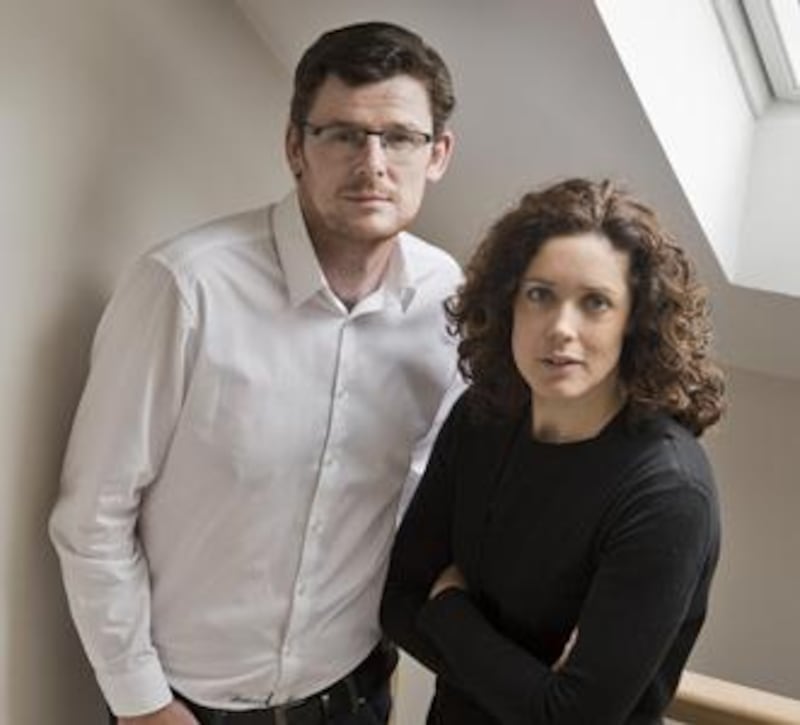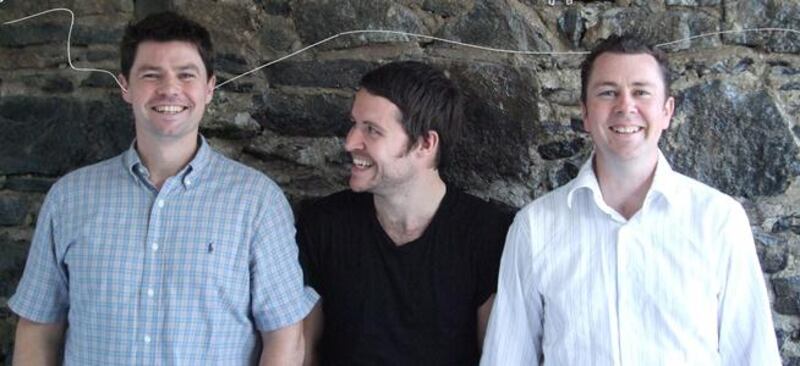In the wake of the recession homeowners' ideals have been readjusted. Property taxes, rising energy bills and impending water charges mean that the desire to supersize, to build a McMansion with an en suite in every bedroom seems extravagantly out of touch with the times. Small is beginning to look beautiful. Last year, a Colorado couple, Christopher Smith and Merete Mueller, were the subject of a documentary, Tiny: A Story About Living Small, that reflects the fall from grace of the super-sized home.
But how do you make small look and feel mighty? You hire an architect to optimise every square millimetre of space, says Ciaran Cassidy, of Lisney, Terenure, “It is hard to quantify the added value of such investment, but it is going to add aesthetic value and light to your living space. Back in the boom, it was all about bigger being better. Now we want well considered homes that add space and maximise light.”
Meet the new breed of emerging designers who believe a smaller extension footprint, well below planning permission requirements, and a relatively small outlay heralds the beginning of a new era in home life.
0 of 3
The stylish starter home
The full renovation of a two-up two-down end-of-terrace house in Blackpitts, a historic area off Clanbrassil Street, Dublin 8, by Shane Cotter and Kathryn Wilson (below), married founders of Architectural Farm, was designed to fit the starter-home needs of its owners, parents of a small child.
The house, originally 55sq m in size, now measures 80sq m. Opening the front door takes you straight into the sittingroom. The kitchen was housed in a single-storey extension to the rear, built in the 1970s. Upstairs there were three small bedrooms, one of which was accessed via another bedroom.

Using much the same footprint as the original house, Cotter and Wilson added a double-storey extension and opened up the ground floor to create a modern living/ kitchen/diningroom with what Cotter calls a double height “void”, designed to make the small space feel more “generous” than it actually is, drawing the eye up and bringing light into the rear from several glazed angles.
Upstairs, they removed the chimney stack, giving them additional space in which to create a good-size master bedroom with a small dressing area and a small boxroom for their child. On the first floor extension, they installed a bathroom pod. The work led iconic design magazine Wallpaper* to choose them as one of 20 practices it selected from 17 countries in its list of emerging architects of 2014 in its latest edition.
What appealed to Wallpaper* was the fact that while the house looked architectural both outside and inside, it did not feel clinical, Cotter explains. "The impression is very much that of a family home."
The dining area includes a long window seat with storage built in underneath – ideal for the many toys and accessories of a small child. The entire refurbishment cost €110,000. The price included dry lining the original house, installing an efficient boiler and a solar panel. "What it shows is that you don't need a massive house to invest in architecture," Cotter says. The project also garnered the couple an RIAI emerging practice Irish Architecture Award. architecturalfarm.com
Council house cool

A former council house on Rutland Avenue, Crumlin, of about 70sq m (753sq ft) had two small reception rooms, a parlour to the front and a similar-sized room to the rear. The kitchen was situated in a lean-to extension, of indeterminate age but not original to the house. In its footprint, architect
Eamon Peregrine
(left) created an open-plan living space that included a triangular shaped courtyard to bring in further light and add a sense of theatre to the space. It’s a “slow reveal”, Peregrine says, designed so that you don’t see everything at once.
"As you walk into the kitchen and dining areas, you don't see the lounge or courtyard until you're completely in the room." The 19sq m extension did not need planning because it fell well within the 40 metres-plus guidelines. Peregrine, who set up his business in 2003, went over budget. The job that he quoted €45,000 to do ended up costing just under €60,000 but it won him an Irish Architecture Award last year in the best house extension category. Bar replacing a back window in the back room with a door he didn't touch the existing house which the owner shares with his two dogs. eamonperegrine.ie
Flexible family home
 Aoibheann Ní Mhearáin
Aoibheann Ní Mhearáin(left) is a mother of two who set up her practice, Anima, in 2001. In Dublin 4, she overhauled a 90sq m (969sq ft) Victorian terraced home to make it a fully functioning modern family home by knocking down the existing extension and replacing it with an open plan, split-level living room of about 20sq m. The refurbishment included insulation, new bathrooms, the extension and an attic conversion.
A butterfly roof lifts her extension out of the ordinary. “It stops it looking too bulky when viewed from the outside or imposing on neighbours,” Ní Mhearáin explains.
Situated on the extension's upper level is a lacquered kitchen with siltstone countertops. Steps lead down to a lounge area. Instead of a utility room she installed a utility cupboard, hiding the washing machine, drier and storage shelves behind large tongue and groove doors, a blue theme that she carries throughout the house to knit it together. The entire project cost €150,000. Architecture on any scale is about the way you live, Ní Mhearáin explains. "In smaller homes you have to be clever. When visiting homes or looking through magazines for references take a note of what you like about the homes you see and show these to your architect." anima.ie
Brand new bungalow

Declan O’Donnell,
(far left with Ciaran McCoy and Barry Kane)
is one of a trio of architects at the ODKM practice, in business since 2010. In a side garden in Knocklyon they built a new single-storey bungalow from scratch for €200,000.
“It’s an example of what can be achieved if you push the boundaries,” says O’Donnell, who cut his teeth working for Norman foster’s Foster and Partners in London. His client, a retired woodwork teacher, wanted a “simple and uncomplicated house within a limited budget”.
The house has two small bedrooms, one of which is en suite, an open-plan kitchen, diningroom and lounge, and a study on a mezzanine that is accessed from the hall.
“Dublin needs more good, responsive architecture that can be built for relatively affordable prices,” says O’Donnell. While his client didn’t have to pay for a site, the build price is worth considering as a base price.
Even if you bought a site in Dublin for €200,000 or even €400,000, at the end of the project you will get an A-rated home for €400,000 to €600,000, or even €450,000 to €650,000, allowing for some contingency on finishes, that is still more affordable than many of the second-hand homes currently on the market in the capital. "The house should have got an A-rating, but without telling us the client installed a stove, effectively putting a hole in the roof," O'Donnell adds. odkmarchitects.com
Glazed extension
 Grainne Dunne
Grainne Dunneand
Nicola Ryan
(left) run Studio Red and their work is shortlisted in this year’s Irish Architecture Award in the house extension category for their extension to a period farmhouse by a lake in Co Clare. The work is also listed in the Public Choice Award.
The space is ultra modern compared to the period design of the original house but they’ve knitted the two by incorporating farm and farmhouse elements into the extension.
These include a floor made of local Doolin stone, that looks like the flagstone floors of a traditional farmhouse, and sliding barn doors that when closed lock up the space securely and when open tie the new build with the other farm sheds and outhouses. One barn door hides the woodshed where a supply of locally chopped wood is seasoning for use in the floating, orb-like, stove.
While the glazed extension contrasts with the period feel of the main house it fits into the surrounding environment.




















